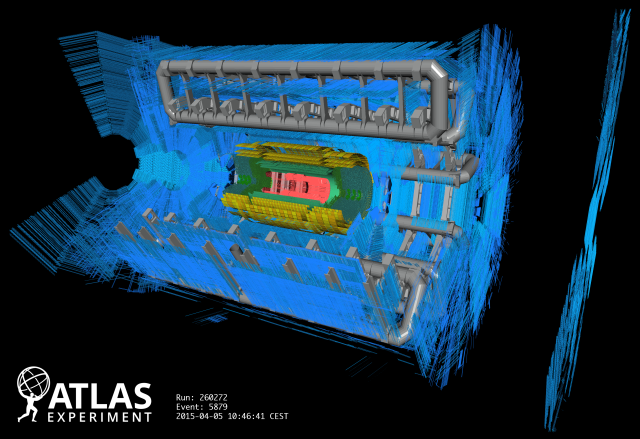Access to Collaboration Site and Physics Results
The first long shutdown of the Large Hadron Collider has now ended, after two years of intense but careful activity refurbishing and improving many aspects of ATLAS, mirroring the work to prepare the LHC for collisions at the new energy of 13 TeV. Many dedicated people in ATLAS have worked tirelessly to install a new innermost layer deep inside the experiment, and to make many other important improvements which will enhance the capabilities of the experiment in the coming operation period. A further campaign of activity has improved and enhanced our worldwide computing and software suites. In parallel to all this, people have been working hard to gain a more complete picture of the physics of the Run-1 data - resulting in a total of over 400 journal papers.

Today, with the first beam circulating again in the LHC, ATLAS is ready and waiting for collisions. Highly committed people, young and old, are operating the detector from the control room, with others waiting to study the new data in our member universities and research labs around the world. We are keenly finishing the preparations for the exploration of the physics landscape at these new, unprecedented, energies for particle collisions in the laboratory. Questions abound. Will the new data bring us insights beyond the Standard Model of particle physics already this year, or will it take longer? What will we find: more Higgs bosons, dark matter, extra dimensions of space-time, or something even stranger? We do not know, but we have much anticipation and excitement on this next significant step back on the road to collisions.
Dave Charlton, ATLAS Spokesperson





